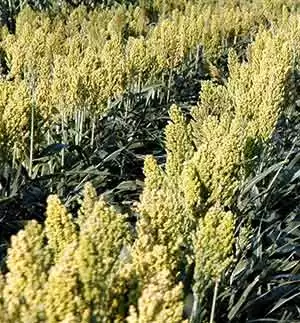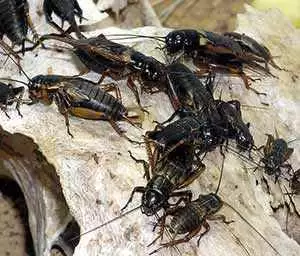Celiac.com 10/03/2012 - In an effort to expand the market for Kansas-grown sorghum, a professor at Kansas State University and a group of food science graduate students are conducting research into the use of sorghum in new gluten-free food products for people with celiac disease.
 Kansas is one of the top sorghum producers in the U.S. In 2006, as the manufacturing of gluten-free products started to take off, sorghum farmers began looking for alternative uses for their crop.
Kansas is one of the top sorghum producers in the U.S. In 2006, as the manufacturing of gluten-free products started to take off, sorghum farmers began looking for alternative uses for their crop.
Celiac.com Sponsor (A12):
Fadi Aramouni, K-State professor of food science, said that quest triggered the university's research into sorghum as a gluten alternative. In America, sorghum has traditionally been used for animal feed, but the growing market for gluten-free foods, along with the availability of food-grade sorghum, is fueling the use of sorghum in these types of food products, he said.
Aramouni said the research initially focused on developing a sorghum-based tortilla. He and the students looked at the six varieties of sorghum grown in Kansas and determined which one they thought would work best. They considered factors such as grain hardness, protein, carbohydrate and fiber content, shelf life, dough quality, and flavor.
Right away, the research team ran into problems with milling, "because it turns out that the particle size during the milling will affect the properties of the sorghum flour," Armuni said. One problem is that sorghum tends to form a batter rather than a dough, so it is necessary to add eggs and other stabilizers, such as gums, to craft a suitable dough.
Using the facilities at Kansas State's grain and science industry department, along with the U.S. Department of Agriculture laboratory in Manhattan, the research team has been able to create tortillas, breads, Belgian waffles and waffle cones from sorghum.
Their research is largely funded by the Kansas Department of Agriculture, and includes comparing the glycemic index of their sorghum products to those made of wheat, corn and rice. The glycemic index measures how a given carbohydrate raises blood glucose.
In the last few years, the team's sorghum-based creations have won first prize in the American Association of Cereal Chemists competition.
using their new knowledge of sorghum, the researchers are now working to create gluten-free soft pretzels, sweet rolls and dinner rolls, vanilla-flavored Waffle Cones and Crunchums, a raspberry-jalapeno-flavored sorghum snack.
"This is not cooking. This is science," Aramouni said.
It is important science, he adds, because people who must eat gluten-free food need better, more nutritious products. What new gluten-free products would you like to see on the market? Share your comments below.
Source:
- Open Original Shared Link






Recommended Comments